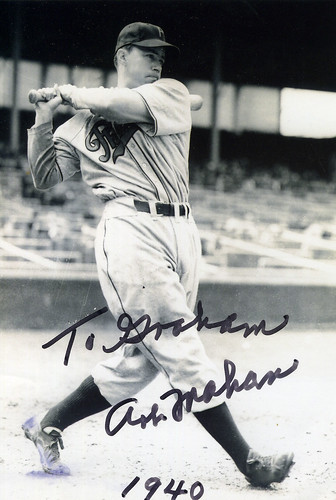I’m pleased to present a guest post written by Matthew Warburg. Matthew contacted me after reading my recent post, The 50 best baseball players not in the Hall of Fame. Thus, it’s not surprising that Matthew’s debut post here is about Cooperstown.
_______________
First of all, as this is my first contribution to this Web site, let me introduce myself. My name is Matthew Warburg, I’m 41 years old, born and raised in San Francisco, currently living in Beijing, and a life-long Giants fan. Let it be noted that the only thing worse than having to wait umpteen years for your team to finally win the World Series, is having them finally do it when you are living halfway across the world.
But I’m not writing today about the Giants, but rather, another of my passions: the Hall of Fame. Let me start by saying I think it’s too easy to get in there. I don’t think players should have fifteen shots at being voted in. I also think getting in with only one ballot of 75 percent is too low a barrier. And I don’t think the Veteran’s Committee should enshrine players. For me, the Hall of Fame should be reserved for the true greats of the game, not the merely very good. Therefore, I think it’s time to revamp the HOF voting process. I believe it should be more difficult to get in, though still fair.
I’ll begin by making a simple assertion: We know, for the most part, which players are HOF-worthy and which are not the minute they retire. Among the recently retired, for example, Greg Maddux, Randy Johnson, Roger Clemens, Pedro Martinez, Barry Bonds and Mike Piazza are without question HOF-worthy. We don’t even need to look at the numbers. We just know in our guts. On the other hand, there are players like Mike Mussina and Rafael Palmeiro who despite having gaudy numbers are not worthy, at least in my eyes. I just know it. Truth be told, there just aren’t many players who fall into the gray area of requiring serious debate. Most players are either one of the greats of their era (i.e someone who made opponents shiver in their spikes) or not. No discussion necessary. Thus, I think giving candidates fifteen shots at making their case rather ludicrous.
Therefore, my first suggested revamp would be to reduce the number of times a player is on the ballot to six: in the 5th, 8th, 11th, 14th, 17th, and 20th years after their retirement. This would still allow candidates to be in front of the voters for the same 15-year period between their 5th and 20th seasons of retirement as the current system, but it would make it much more difficult for them to get in through endless years of campaigning in that they would only appear on the ballot every third year.
My second suggested revamp would be to raise the thresholds for both remaining on the ballot and for gaining entrance. Nobody should be able to stay eligible after three years under 20 percent and six years under 30 percent like Bert Blyleven has or gain entrance like Jim Rice did by sneaking over the line with just over 75 percent on his last shot after fourteen rejections. So my first suggestion would be to raise the threshold for remaining on the ballot to 25 percent and to add a three strikes provision stipulating that if you receive less than 50 percent on three separate ballots you lose your eligibility. On the other side of the coin I would make enshrinement tougher by forcing candidates to earn either 75 percent of the vote three times, 80 percent twice, or 90 percent once. Definite HOFers would still get in just as easily with more than 90 percent on their first ballot, but the good but not great players whom I feel are diluting the overall quality of the Hall of Fame would have a higher hurdle to overcome.
If you want an idea of how things would have turned out over the last five years had this system been in place, note the following. Using just the new voting thresholds, only three returning players would be on the 2011 ballot: Roberto Alomar, Barry Larkin, and Edgar Martinez. Bert Blyleven would have lost his eligibility in 1998 after receiving only 17.4 percent of the vote, Jack Morris in 2000 after receiving 22.2 percent of the vote, and Lee Smith in 2005 after his third ballot with less than 50 percent, and Tim Raines in 2008 after receiving only 24.3 percent on his first ballot.
Among the recently elected, Rickey Henderson, Tony Gwynn, and Cal Ripken, would still have been first ballot electees, Bruce Sutter would have lost his eligibility in 1994 after receiving 23.9 percent of the vote on his first ballot, Jim Rice would having lost his eligibility in 1997 after his third ballot with less than 50 percent, Goose Gossage would have lost his eligibility in 2002 after his third ballot with less than 50 percent, and Andre Dawson would still be eligible, needing two more ballots of more than 75 percent to get elected.
Note that if players were only on the ballot every third year instead of every year, as I have suggested, Gossage would still be eligible, needing one more ballot of 80 percent, and Rice would have remained eligible for all fifteen years without being elected. The bar for the good but not great players would be a little higher, but not insurmountable.
______________
This was a guest post written by Matthew Warburg. Email him at mattwarburg@hotmail.com
